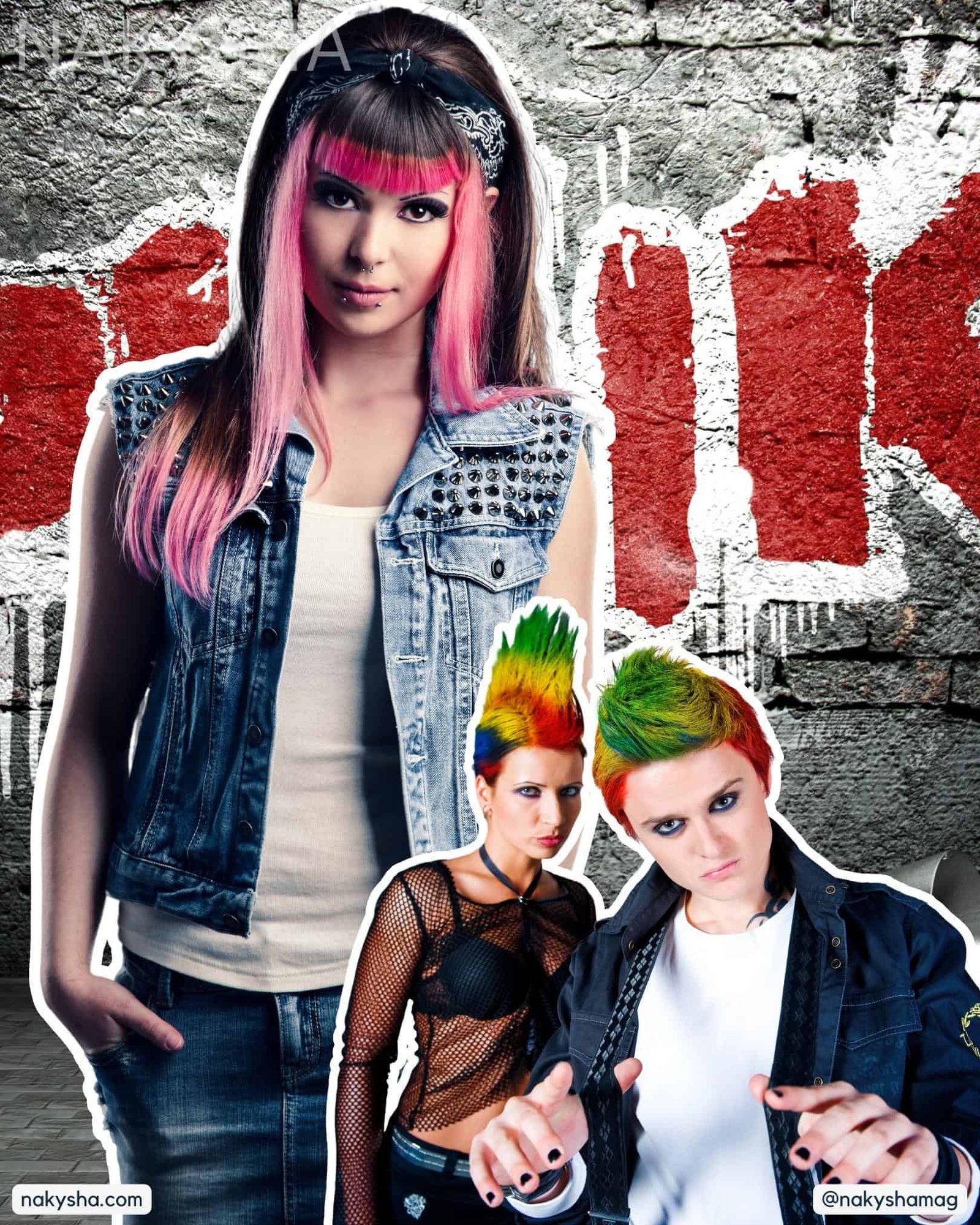My girlfriend wears punk clothes because they allow her to be unique and get attention. People who identify as punk view fashion as a means of expressing themselves through appearance.
Punk fashion has a long and rich history, beginning in the 1970s as part of the punk rock movement. It is a style characterized by loud, bold patterns and bright colors, along with ripped jeans, safety pins, and studs. Punk fashion has significantly influenced modern streetwear and continues to be popular today.
In this article, we will explore everything there is to know about punk fashion, from its origins to tips on incorporating it into your wardrobe.
What is Punk Fashion?
Punk fashion has been a staple of the counterculture since its introduction in the 1970s. Punk fashion was first worn by rebellious young people who wanted to make a statement. It grew out of the British music scene. Over time, punk fashion has grown and evolved into something far more than just an aesthetic choice; it has become a lifestyle that stands for individuality and freedom.
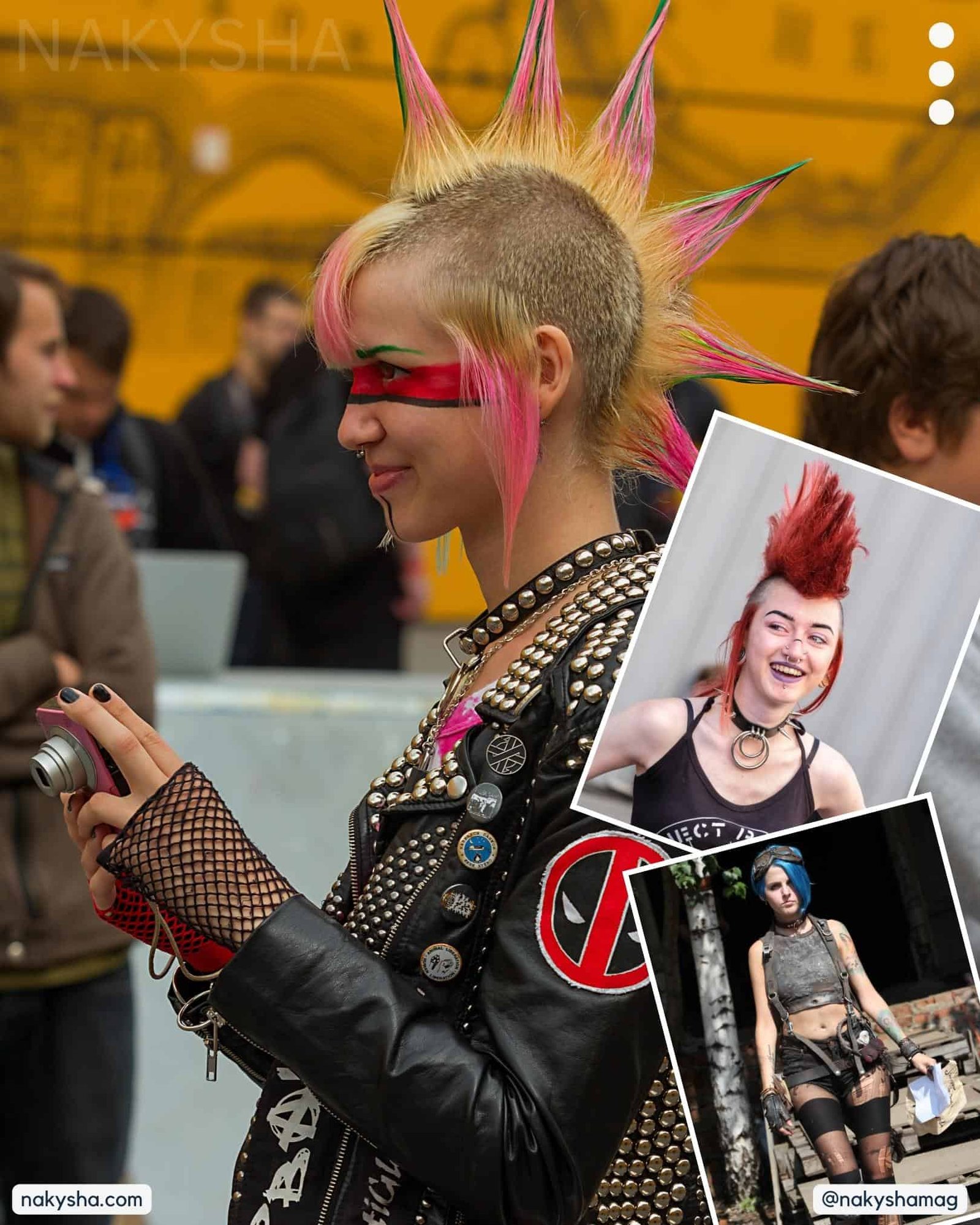
The origins of punk fashion are up for debate, but most people trace its beginnings to the early days of the London punk scene in 1976. Punk musicians like Malcolm McLaren and Vivienne Westwood were at the center of this movement, using their stores on King’s Road to spread their radical ideas about style and culture.
They blended traditional English tailoring with outrageous materials like leather and spikes to create clothes that stood out from anything seen before. It has bright colors and designs, like safety pins or spikes, showing rebellion and a break from traditional styles. Punk fashion has evolved into hardcore, street, and pop punk. Punk fashion is marked by its edgy aesthetic and DIY attitude.
The Meaning of Punk Fashion
Punk fashion is meant to be a bold and non-conformist statement. It shows a desire for individuality and a rejection of societal norms.
Punk style usually involves ripped clothes, leather jackets with spikes, band t-shirts, and spiked belts and bracelets. The look is often messy on purpose and can be seen as a rejection of popular fashion.
Some hairstyles, like the mohawk or a shaved head, and make-up choices, like thick eyeliner and brightly colored hair dyes, have also been linked to punk fashion. Punk fashion’s emphasis on self-expression and independence was thus made clear.
Types of Punk Fashion
There are many types of punk fashion, each with unique styles and characteristics. Some of the most notable types of punk fashion include:
Classic Punk Fashion: This style originated in the 1970s and is characterized by ripped clothing, leather jackets, band t-shirts, and studded accessories. It often features bold prints and graphics, such as the iconic Sex Pistols t-shirt.
Hardcore Punk Fashion: This style emerged in the 1980s and is associated with the hardcore punk music scene. It is characterized by a more aggressive and militant look, with elements such as combat boots, camouflage patterns, and military-inspired jackets.
Gothic Punk Fashion: This style combines elements of punk fashion with Gothic aesthetics, such as black clothing, corsets, and lace. It often features dramatic makeup, such as heavy eyeliner and dark lipstick.
Cyberpunk Fashion: This style is influenced by science fiction and technology, featuring neon colors, futuristic fabrics, and edgy accessories such as cyber goggles and gas masks.
Pop Punk Fashion: This style is associated with the pop-punk music scene and is characterized by a more polished and mainstream look. It often features bright colors, skinny jeans, and band merch.
These are just a few examples of the many types of Punk fashion. Each type reflects a different aspect of punk culture and is a unique expression of individuality and rebellion.
What is the Origin of Punk Fashion?
Punk fashion emerged in the mid-1970s as a subculture and style that rejected mainstream fashion and social norms. The origins of punk fashion can be traced back to the punk rock movement, which began in the United States and the United Kingdom.
The early punk rockers wore torn, ripped, and safety-pinned clothing, often adorned with provocative slogans or political messages. The DIY (do-it-yourself) aesthetic was also essential to punk fashion, as many early punk rockers made their clothes and accessories.
The punk style was also influenced by the clothing worn by the working-class youth in the 1950s and 1960s, as well as by the Teddy Boys, a subculture in the UK in the 1950s that wore drape jackets, drainpipe trousers, and crepe-soled shoes.
Punk fashion was also a reaction to the commercialization and commodification of fashion, as punk rockers rejected the idea of fashion as a means of expressing wealth and status. Instead, they used fashion to express their individuality, rebellion, and non-conformity.
Today, punk fashion continues to influence and inspire fashion designers and subcultures around the world.
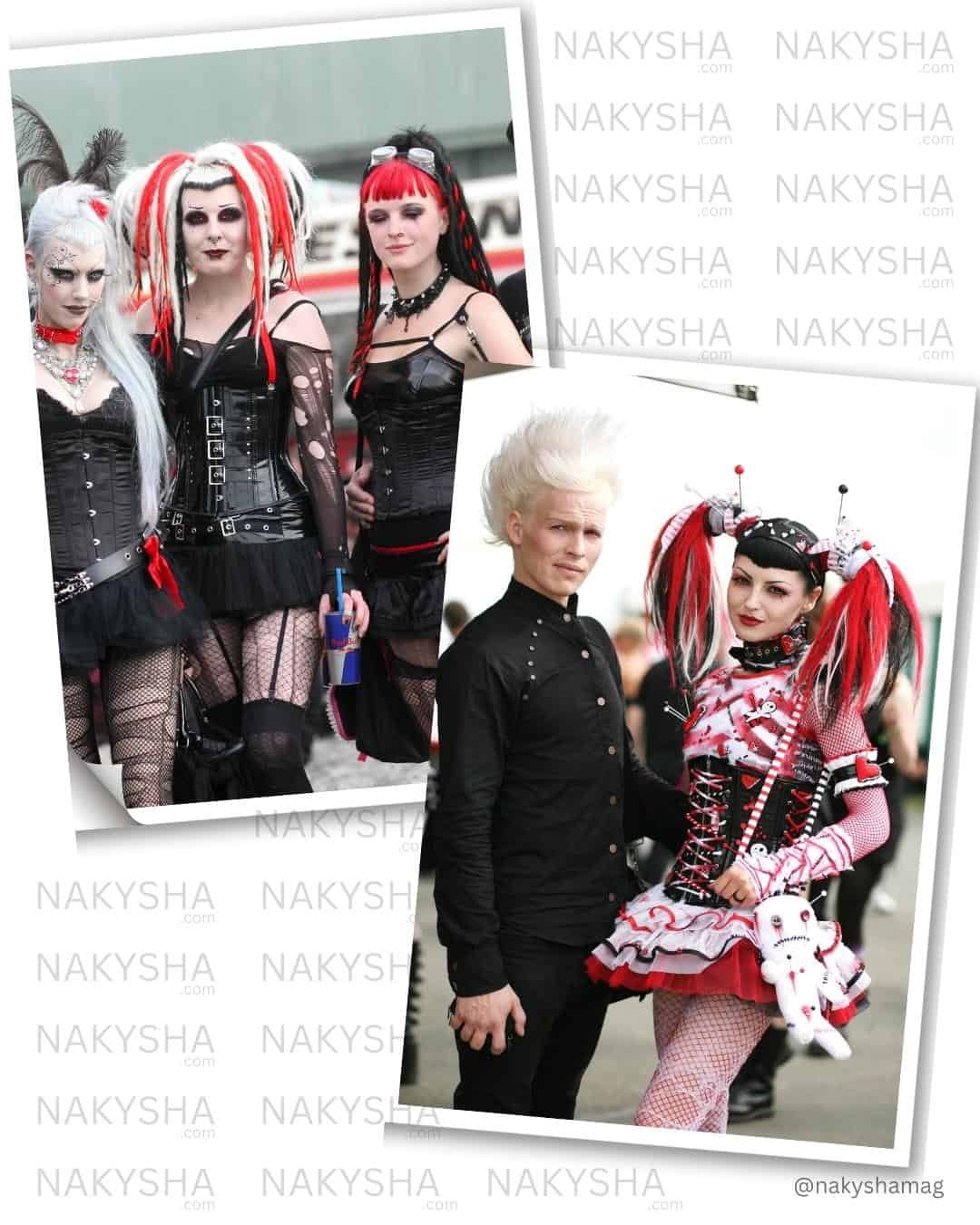
The Sources of Inspiration
The sources of inspiration for punk fashion are diverse and varied and reflect the anti-establishment, DIY ethos of the punk subculture. Some of the critical sources of inspiration include:
Music: The punk rock movement emerged in the mid-1970s, and its music was characterized by its raw, aggressive sound and its socially and politically conscious lyrics. Many punk rockers wore clothing that reflected their musical tastes, such as band t-shirts, leather jackets, and denim.
Working-class fashion: Many early punk rockers came from working-class backgrounds and often wore clothing that reflected their socio-economic status. This included ripped jeans, leather jackets, and work boots.
Vivienne Westwood: Designer Vivienne Westwood was a crucial figure in the punk fashion movement, and many punk rockers wore her clothing in the 1970s. Westwood’s designs incorporated bondage straps, safety pins, and tartan patterns.
DIY culture: The punk subculture was characterized by its DIY ethos, and many punk rockers made clothing and accessories. This led to the use of unconventional materials and techniques, such as safety pins, duct tape, and spray paint.
Political activism: Many punk rockers were politically active, and their clothing often reflected their political beliefs. This included t-shirts with provocative slogans, patches with anarchist symbols, and buttons with political messages.
Punk fashion was influenced by a wide range of cultural and social factors and was characterized by its rebellious, nonconformist attitude.
Popular Punk Fashion Designers
Several designers have contributed to the punk fashion movement, each with their unique approach and aesthetic. Here are a few of the most popular punk fashion designers:
Vivienne Westwood – Vivienne Westwood is often credited with pioneering the punk fashion movement in the 1970s. Her designs incorporated elements such as bondage straps, safety pins, and tartan patterns, and she continues to significantly influence punk fashion today.
Alexander McQueen – Alexander McQueen’s designs often incorporated elements of punk fashion, such as leather, studs, and safety pins. His runway shows were often theatrical and provocative, and he is widely regarded as one of the most innovative and influential fashion designers of the 21st century.
Jean-Paul Gaultier – Jean Paul Gaultier is known for his unconventional designs and use of materials such as leather, PVC, and mesh. He has been influenced by the punk subculture throughout his career and has incorporated elements such as safety pins and tartan patterns into his designs.
John Galliano – John Galliano has been a significant figure in the fashion industry for decades, and his designs often incorporate punk and goth fashion elements. His designs often feature unconventional fabrics and shapes, and he is known for his theatrical runway shows.
Rei Kawakubo – Rei Kawakubo is the founder of the avant-garde fashion label Comme des Garçons, and her designs often incorporate elements of punk fashion. Her work is known for its unconventional silhouettes, bold colors, and use of unusual materials.
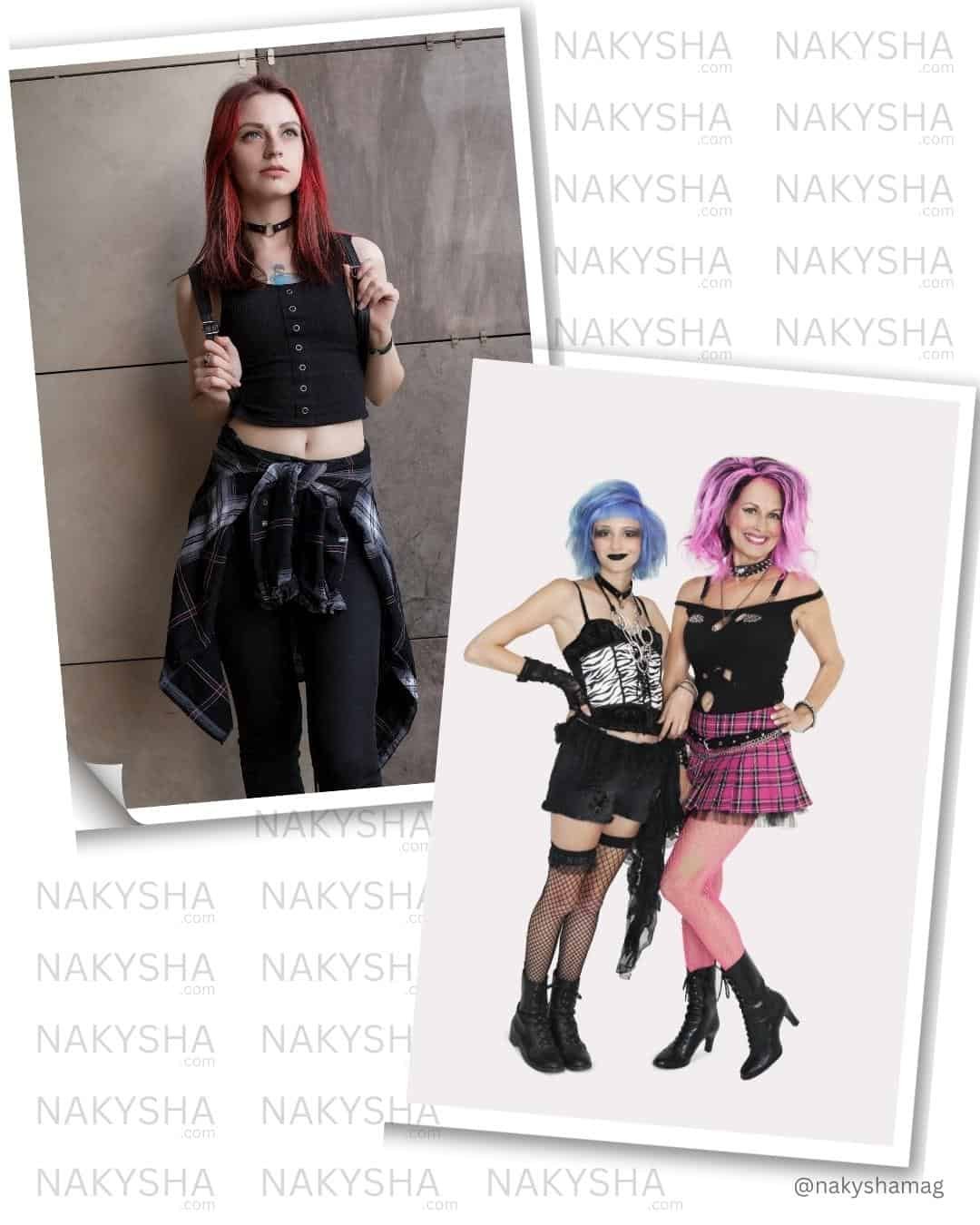
Why is Punk Style Still Popular?
The enduring popularity of punk style can be attributed to its rebellious attitude, timeless appeal, and ongoing influence on fashion and culture. The punk style remains popular for a number of reasons:
Nonconformity: Punk style is about breaking the rules and challenging the status quo. This nonconformist attitude continues to appeal to people who want to express their individuality and rebel against societal norms.
Timeless appeal: Despite being associated with a specific period, the punk style’s timeless appeal allows it to remain relevant and fresh. The use of leather, denim and other classic materials means that punk fashion can be updated and reinterpreted in new ways.
DIY ethos: The punk subculture DIY ethos inspires people to create clothing and accessories. This approach to fashion is not only more sustainable, but it also allows people to express their creativity and individuality.
Influence on other subcultures: Punk style has influenced a number of other subcultures over the years, including grunge, goth, and emo. This cross-pollination of styles has helped to keep punk fashion relevant and popular.
Social and political commentary: Punk style has always been associated with social and political commentary, and this continues to resonate with people who want to express their views on issues such as inequality, consumerism, and the environment.
The Evolution of Punk Fashion
The evolution of punk fashion is a complex and multifaceted story that spans several decades and multiple subcultures. It has its roots in the late 1960s and early 1970s when young people in the UK and US began rebelling against the mainstream culture and embracing a DIY ethos.
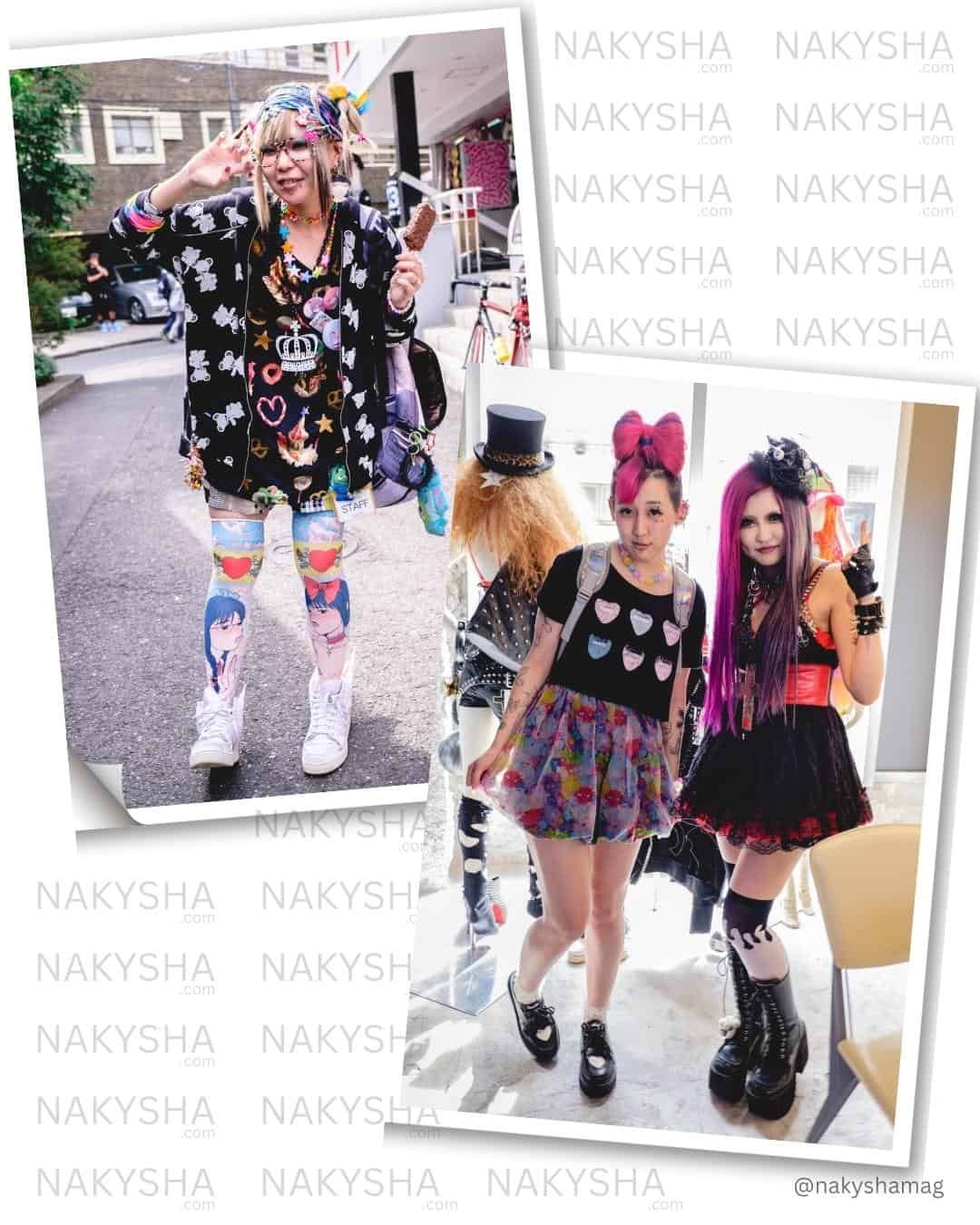
Ripped and safety-pinned clothing, leather jackets, and Dr. Martens boots characterized early punk fashion. The look was designed to shock and provoke, with many punks using their appearance to express their anti-establishment views and reject traditional social norms.
As punk music and culture evolved, so did its fashion. In the late 1970s and early 1980s, the punk subculture split into various subgenres, each with its unique fashion style. For example, the New York hardcore scene was known for its baggy jeans and oversized t-shirts, while the British anarcho-punk movement favored military-style jackets and boots.
In the 1990s, punk fashion experienced a resurgence with the rise of grunge music and its associated fashion style. The grunge look was characterized by ripped jeans, flannel shirts, and combat boots, and it was a significant departure from the more polished fashion of the 1980s.
Today, punk fashion continues to evolve and influence mainstream fashion trends. Many contemporary designers draw inspiration from punk fashion, incorporating studs, safety pins, and leather.
The punk aesthetic has also influenced streetwear and DIY fashion movements, with many young people embracing punk-inspired fashion to express their individuality and rebellion.
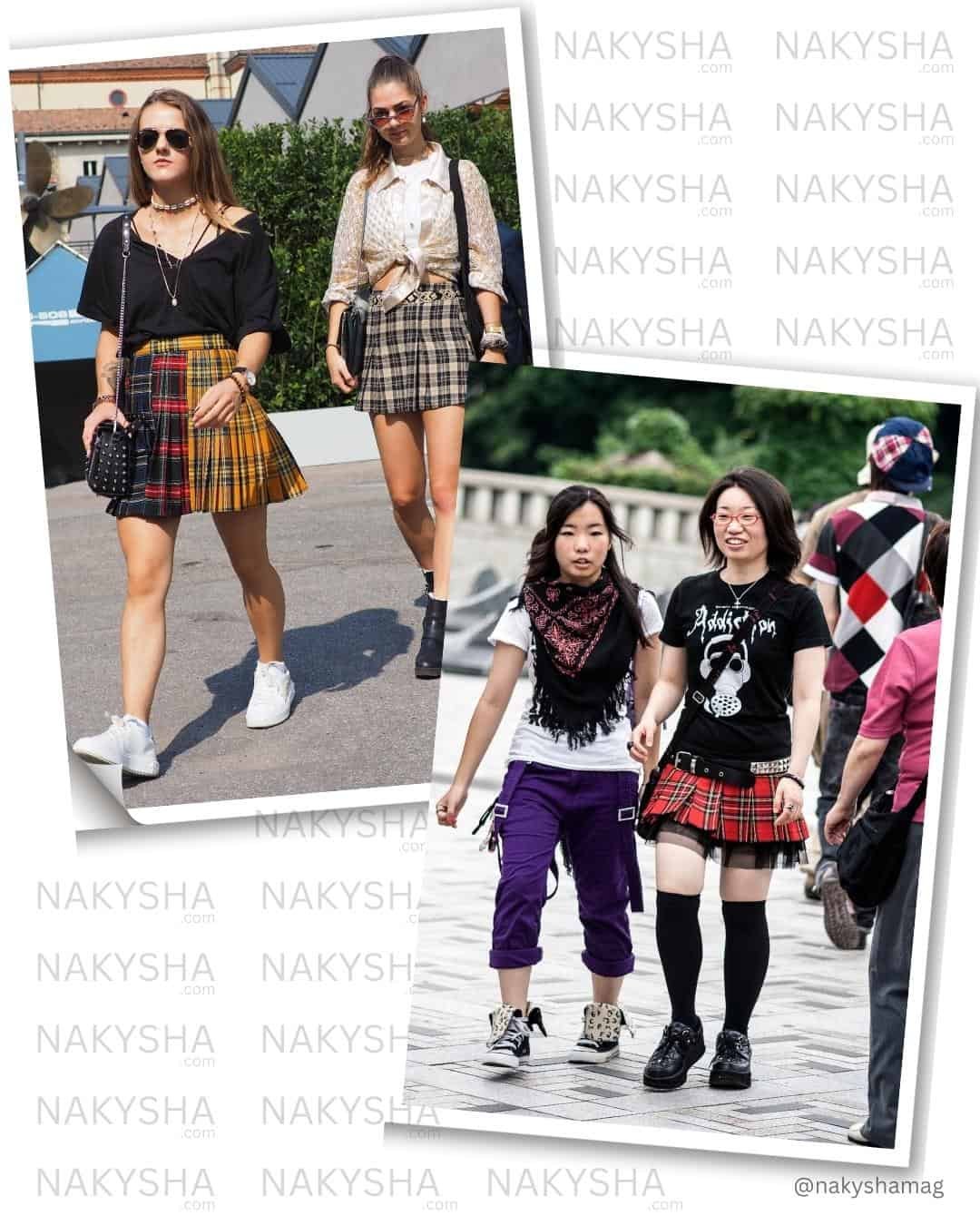
What are the Characteristics of Punk Fashion?
Punk fashion is known for its unconventional and rebellious style, characterized by a range of distinctive features. Here are some of the critical characteristics of punk fashion:
DIY ethos: A core element of punk fashion is the DIY approach, where individuals create their unique style using a mix of new and repurposed materials.
Ripped and distressed clothing: Punk fashion often features clothing that has been intentionally ripped, torn, or distressed for a worn-in look.
Leather and denim: Leather and denim are common materials used in punk fashion. Leather jackets, vests, pants, denim jackets, jeans, and shorts are often paired together.
Safety pins and studs: Safety pins and studs are used as decorative elements on clothing, shoes, and accessories, often added to give a rebellious and edgy look.
Band t-shirts and patches: Band t-shirts and patches featuring punk or rock bands are often worn to express a person’s music tastes and affiliation with the punk scene.
Spiked accessories: Spikes are commonly seen on belts, bracelets, and collars, adding to the rebellious nature of the punk aesthetic.
Heavy boots: Combat boots or Dr. Martens are a staple of punk fashion, often paired with skinny jeans or shorts.
Bold hair and makeup: Punk fashion often includes bold and unconventional hairstyles, dyed hair or shaved heads, and heavy makeup, such as dark eyeliner or lipstick.
Punk fashion is about rejecting mainstream norms and expressing individuality and rebellion through clothing, accessories, and personal style.
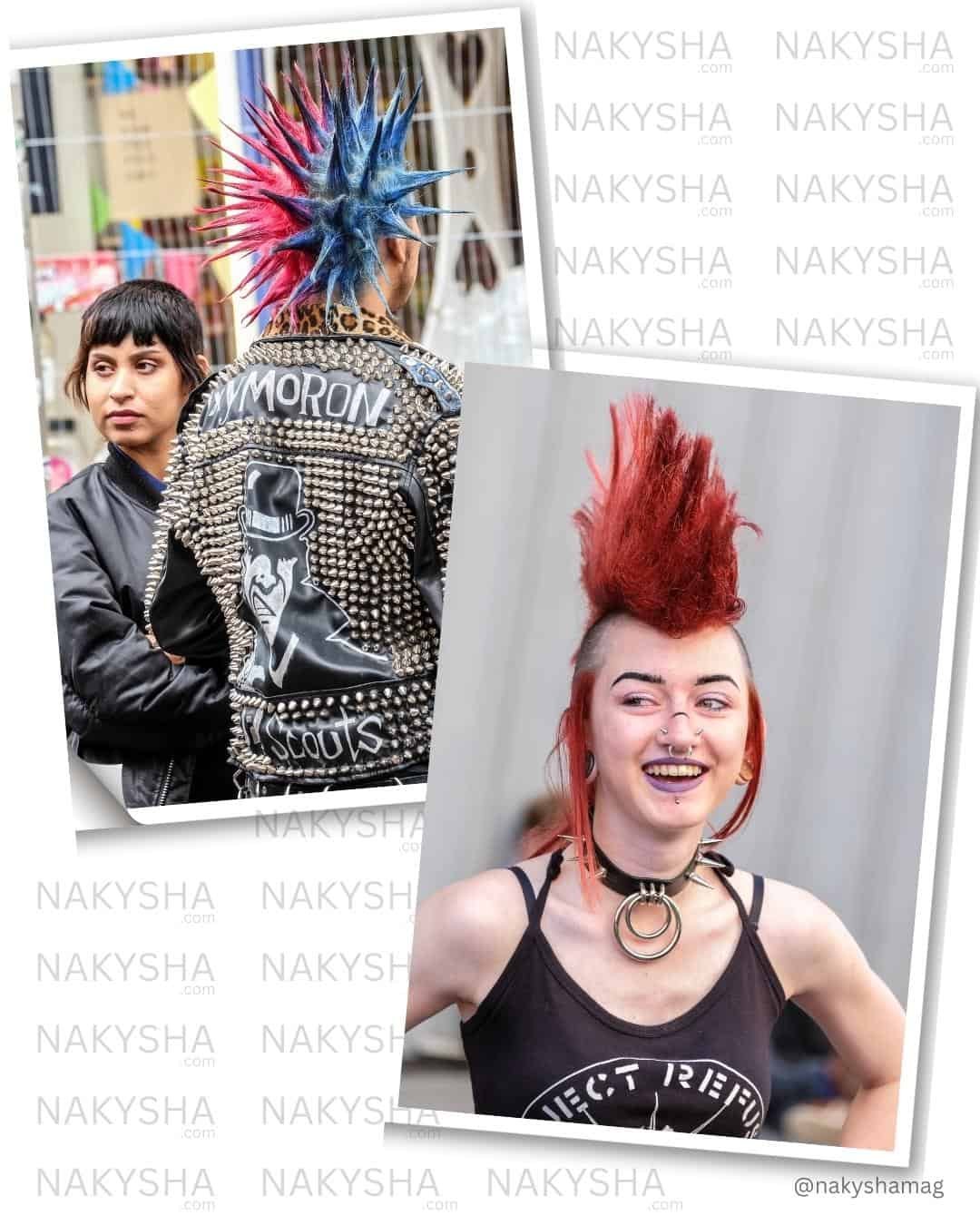
The Colors of Punk Fashion
Punk fashion is not limited to specific colors or color palettes; it is more about individuality, rebellion, and expressing oneself. However, some colors are often associated with punk fashion, including:
- Black: Black is a color commonly associated with punk fashion. It represents rebellion and anti-establishment sentiment and is often used to create a darker, edgier look.
- Red: Another color often used in punk fashion, particularly in accessories such as studded bracelets or belts. It is a bold and attention-grabbing color that can add to the rebellious nature of punk fashion.
- White: Although less common than black or red, white is also used in punk fashion, particularly in contrast to darker colors. For example, a white punk band t-shirt paired with ripped black jeans and boots can create a stark and edgy look.
- Bright and neon colors: While not as common as darker colors, bright and neon colors are sometimes used in punk fashion, particularly in the punk subgenre of pop-punk. These colors can add a playful and energetic vibe to the punk look.
Punk fashion is less about specific colors and more about the overall style and attitude conveyed by the clothing and accessories worn. It is about expressing oneself and rejecting mainstream fashion norms rather than adhering to a particular color scheme.
How to Dress in Punk Fashion?
Dressing in punk fashion is all about expressing your individuality and rejecting mainstream fashion norms.
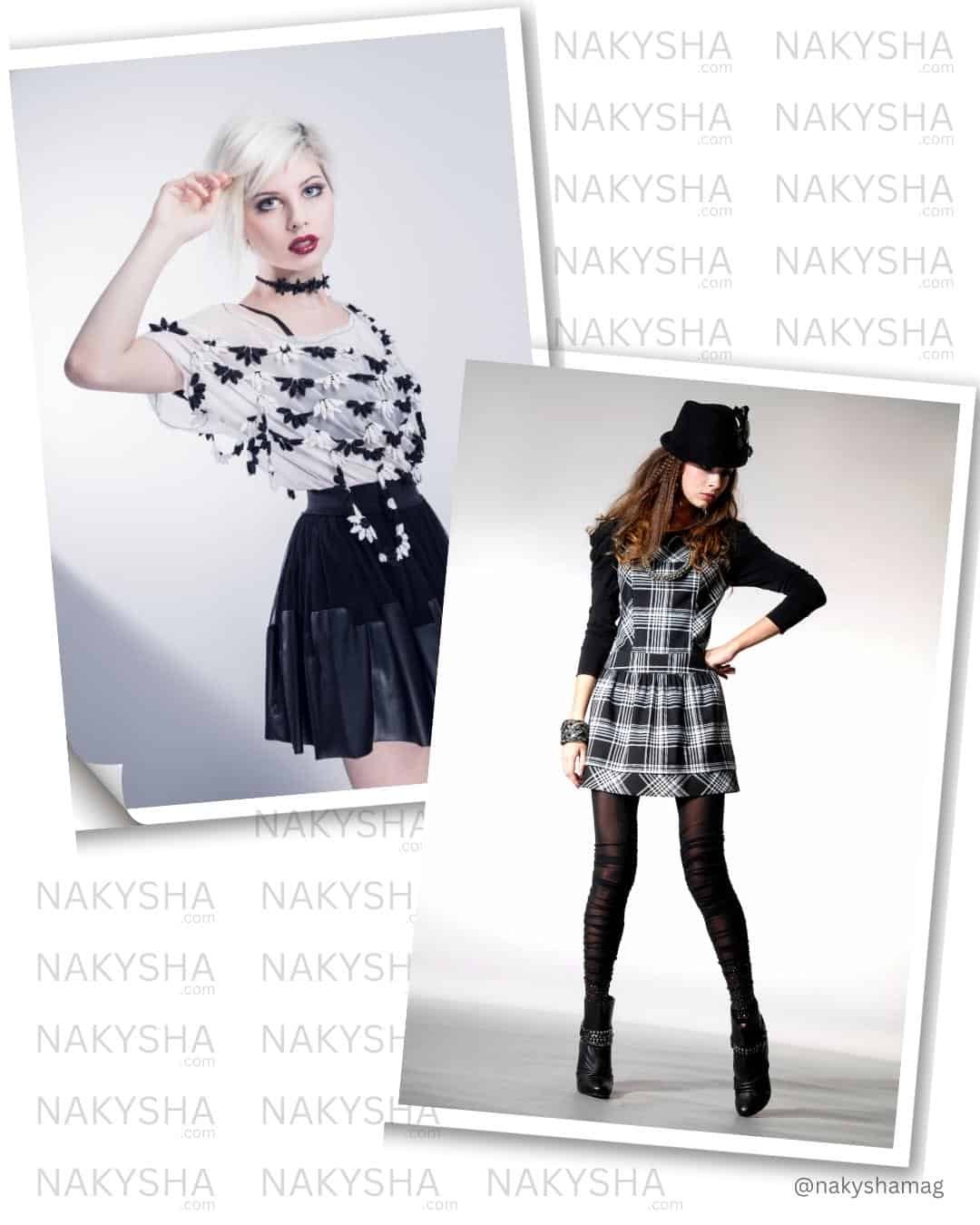
Here are some tips on how to achieve a punk-inspired look:
Start with the basics: Begin with basic punk staples such as skinny black jeans, leather jackets, and band t-shirts. Look for clothing that has been distressed or has a worn-in look.
Add accessories: Accessories are a vital component of punk fashion. Look for studded belts, spiked bracelets or chokers, and safety pin earrings to add a rebellious edge to your outfit.
Experiment with hair and makeup: Punk fashion often features bold and unconventional hairstyles and makeup. Try making your hair bright, shaving your head, or experimenting with a mohawk. For makeup, go for heavy black eyeliner or bold lip colors.
Mix and match: Punk fashion is about mixing and matching different elements and creating your unique look. Don’t be afraid to mix patterns or textures and experiment with different combinations.
Embrace DIY: A DIY approach is a fundamental part of punk fashion. Get creative and make your clothing or accessories, or customize existing items by adding patches or studs.
Don’t be afraid to stand out: Punk fashion is about rejecting mainstream norms and standing out. Embrace your individuality and wear what makes you feel confident and authentic.
Punk fashion is not about following strict rules or adhering to a particular style. It’s about expressing yourself and your individuality and creating a look that represents your style and attitude.
Punk Fashion Outfits
Punk fashion has been a defining trend in fashion since the 1970s. It’s characterized by loud colors, aggressive silhouettes, and an overall rebellious attitude that makes punk outfits stand out. Punk fashion is about making a statement and expressing yourself through bold looks and accessories. From vintage leather jackets to ripped jeans and studded tops, there are plenty of options to choose from when creating a punk-inspired wardrobe.
When putting together the perfect punk outfit, there are no hard rules – have fun experimenting with different colors and textures. Leather jackets can be paired with graphic tees featuring band logos or distressed denim for a classic look. For something more daring, consider adding bright accessories such as plaid skirts or fishnet tights for extra edge.
Punk Fashion Makeups
Punk makeup is a trend that has been around since the 1970s and continues to be seen today. Whether inspired by classic punk bands or modern punk rockers, wearing punk makeup can help you express yourself and have fun with your look.
Punk makeup is all about bold colors, extreme shapes, and dramatic eyeliner—plus, it’s easy to customize, so it fits your style. Here are some tips on how to do punk makeup like a pro!
Start by prepping your skin with primer, concealer, and foundation for a smooth base, then use eye shadow in bright hues such as fuchsia pink or electric blue to create an edgy look. To add even more drama, add extra layers of color on the lid and blend outwards for a smoky effect.
Punk Fashion Hairstyles
Have you ever wanted to stand out and be unique? If so, colorful punk hairstyles are the perfect way to showcase your style. Brightly colored wigs can help you achieve a daring new look with minimal effort. With these easy steps, you’ll be able to create a fun and funky punk hairstyle that will turn heads wherever you go!
Choose your wig’s color scheme. Consider colors that contrast each other or emphasize certain features like eyes or lips. Neon shades are famous for punk looks, but feel free to get creative with whatever colors catch your eye! Once you’ve decided on the colors, it’s time to pick out the wig itself. A synthetic wig is ideal for this style since it won’t require heat styling or too much product maintenance.
Choose the straight hairstyle. This beauty look will be simple if you already have straight hair. You can straighten it with a hair straightener if you don’t have naturally straight hair.
Make a statement with your hair color. Wild hair colors like hot pink, bright red, bright green, or dark purple are entirely acceptable in the pop-punk world. Get some brightly colored streaks, or dye your hair one bright color.
Make a faux hawk with your hair gel. Give your hair a pop punk makeover by styling it into a faux-hawk with hair gel. Punk rockers love mohawks, and the faux-hawk is the pop-punk version.
Punk Fashion Accessories
Punk fashion has been a popular fashion style for decades. It has undergone many changes over the years, and today it is still a vibrant part of the fashion world. Fashion accessories play an essential role in punk style, adding edge and attitude to any outfit. From bold jewelry to bright hair pieces, there are plenty of options for punk accessories.
A great place to start with punk fashion accessories is jewelry. Punk style usually features statement necklaces or chokers made from leather or metal chains and emblazoned with spikes or charms that reflect the wearer’s personality. Big earrings – preferably studded with rhinestones – also work well with this look, as do wristbands and rings with skulls, crosses, or vintage symbols.

